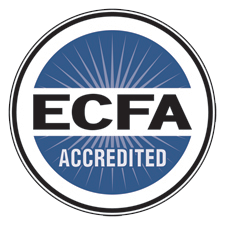Success is when our support is no longer needed, and a community thrives on its own.
At Children’s HopeChest, our mission is to empower vulnerable children and their families, helping them break free from the cycle of poverty and build self-sustaining communities. Through deep, transformative partnerships with local leaders, we drive holistic community development. A significant milestone in this journey is the graduation of a CarePoint.

What is a CarePoint?
A CarePoint is a place of hope where we partner with communities to support vulnerable children and their families. Here, individuals find emotional and spiritual support and engage in programs designed to enhance their lives and futures.
What Does it Mean for a CarePoint to Graduate?
Graduating a CarePoint means the community has achieved self-sufficiency and financial independence. It’s a celebration of their strength and resilience, marking the point where they no longer need our support to thrive. This is a moment of great pride, as the community is now ready to continue growing independently.
Our Vision
From the start, each CarePoint is guided by a Community Development Plan and an Exit Plan. These plans are designed to set the foundation for long-term success and self-reliance. Our shared goal with local leaders is to build a thriving community that can stand strong on its own, marking a joyful celebration of their independence.
The Lifecycle of a CarePoint

Phase One: Building the Foundation (Years 1-5)
- Establish community relationships and lay the groundwork.
- Define vision and goals.
- Launch programs and provide essential needs.

Phase Two: Growth and Development (Years 5-8)
- Enhance training, education, and leadership skills.
- Support successful savings groups and community initiatives.

Phase Three: Preparing for Independence (Years 8-15)
- Transition to local leadership.
- Finalize plans for HopeChest’s exit.
- Ensure the CarePoint is fully self-sustaining.

Phase Four: Graduation (Years 16+)
- HopeChest monitors the community to:
- Ensure they are staying on track.
- Maintain the relationships.
Every CarePoint's Unique Journey
Each CarePoint follows its own path, influenced by local resources, funding, and conditions. This means timelines can vary. We are committed to adapting and making the most of our resources to support each community’s unique journey to success.
Measuring Progress
Even after a CarePoint graduates, we remain involved for at least two years. We continue to nurture our relationship, monitor progress, and offer guidance to ensure the community remains on track and fulfills its vision.
To determine if a CarePoint is ready for graduation, we assess the Community Development Plan: the community’s progress against initial goals, and Community Index Impact Vitals: Metrics such as youth graduation rates, economic participation, and the impact of infrastructure projects.
We’re thrilled to announce that our first CarePoint graduation is approaching! This milestone reflects the collective effort of our partners and the communities we support. If you’re inspired to help us continue this vital work, we invite you to contribute and be part of this transformative journey.
FAQs
Does CarePoint graduation mean the end of community-to-community relationships?
No, we continue to engage with the community even after graduation.
Which country has the most CarePoints close to graduation?
Uganda!
When will the first CarePoint graduation occur?
We’re aiming for the first graduation to occur in 2026.
To determine if a CarePoint is ready for graduation, we assess the Community Development Plan: the community’s progress against initial goals, and Community Index Impact Vitals: Metrics such as youth graduation rates, economic participation, and the impact of infrastructure projects.
Even after a CarePoint graduates, we remain involved for at least two years. We continue to nurture our relationship, monitor progress, and offer guidance to ensure the community remains on track and fulfills its vision.
To determine if a CarePoint is ready for graduation, we assess:
- Community Development Plan: Progress against initial goals.
- Community Index Impact Vitals: Metrics such as youth graduation rates, economic participation, and the impact of infrastructure projects.
Children’s HopeChest has been operating with a traditional sponsorship model for 25 years. To celebrate our quarter-century anniversary, we have switched things up by launching the Friendship Model.
- Community Development Plan: Progress against initial goals.
- Community Index Impact Vitals: Metrics such as youth graduation rates, economic participation, and the impact of infrastructure projects.
In September 2018, the Friendship Model was born from a conversation with HopeChest Country Director of Moldova, Serghei Mihailov, who explained that in Moldova sponsorship has a negative connotation, meaning that a child feels owned by their sponsor. Serghei suggested that, to provide dignity and agency for the child, the child might choose a “HopeChest Friend” to build a relationship with from among those who sign
up to support the CarePoint.





